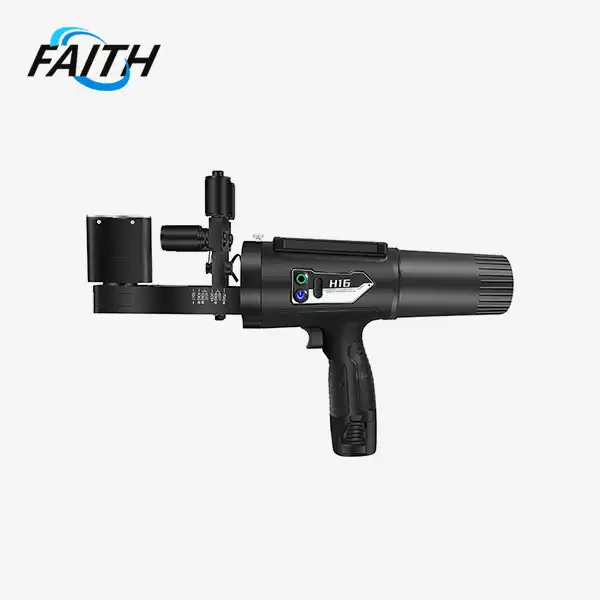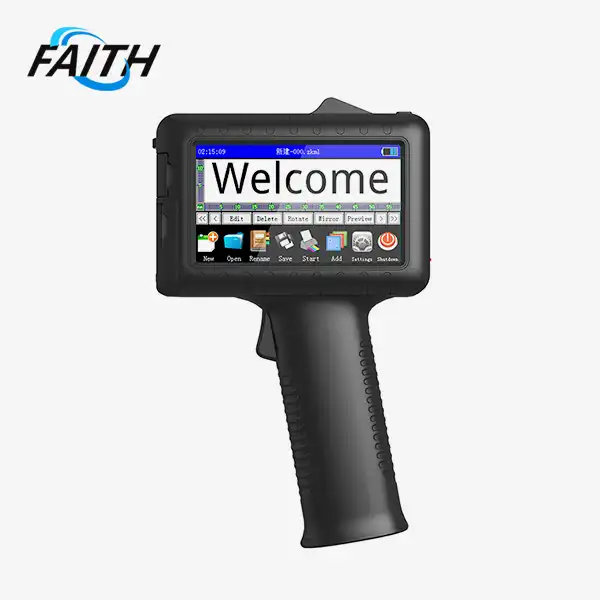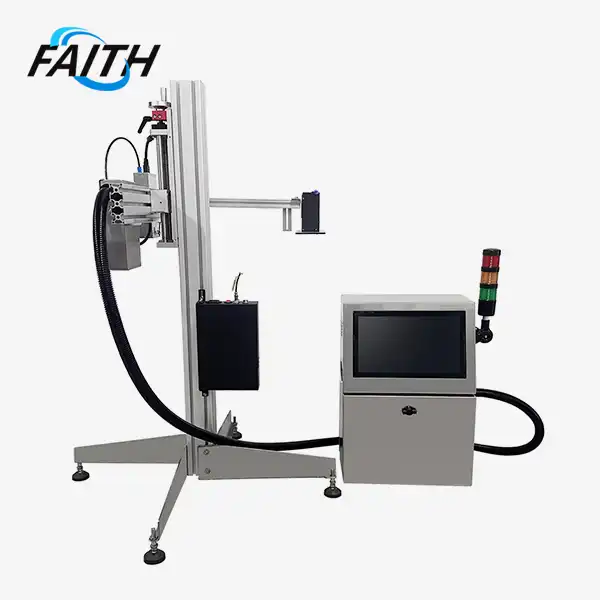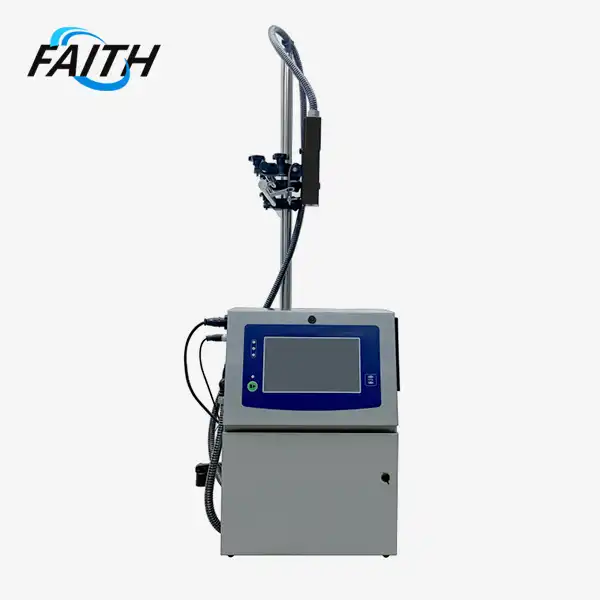Top Piezo-Inkjet PIJ Printers for Food Packaging Labeling
In the ever-evolving world of food packaging, labeling plays a crucial role in conveying essential information to consumers and ensuring regulatory compliance. Piezo-Inkjet PIJ printers have emerged as a game-changer in this domain, offering unparalleled precision and versatility for food packaging labeling. This article delves into the world of Piezo-Inkjet PIJ technology and explores its applications in the food industry.
The Evolution of Piezo-Inkjet PIJ Technology in Food Packaging
Piezo-Inkjet PIJ technology has revolutionized the printing industry, particularly in food packaging labeling. This innovative printing method utilizes piezoelectric crystals to precisely control ink droplets, resulting in high-quality, high-resolution prints. The technology's evolution has been driven by the increasing demands of the food industry for faster, more accurate, and more versatile labeling solutions.
Piezo-Inkjet PIJ printers offer several advantages over traditional printing methods. They provide exceptional print quality, even on challenging surfaces, and can handle a wide range of inks, including UV-curable and solvent-based options. This versatility makes them ideal for the diverse requirements of food packaging labeling, from simple date codes to complex nutritional information and branding elements.
Moreover, Piezo-Inkjet PIJ printers have addressed many of the challenges faced by the food industry, such as the need for fast-drying inks that adhere well to various packaging materials. The technology's ability to print on non-porous surfaces has made it particularly valuable for labeling plastic, metal, and glass containers commonly used in food packaging.
Innovative Features of Modern Piezo-Inkjet PIJ Printers
Today's Piezo-Inkjet PIJ printers are equipped with a range of innovative features that enhance their performance and reliability in food packaging applications. One such feature is anti-precipitation technology, which maintains printing quality by preventing pigment ink from settling. This technology simplifies maintenance processes and ensures consistent print quality, even during short-term shutdowns.
Another key feature is the one-key emptying function, which simplifies ink replacement and equipment maintenance. This function enables operators to quickly clear the ink path when switching ink types or preparing the equipment for long periods of inactivity, ensuring smooth transitions and reducing downtime. It enhances operational efficiency and helps maintain the equipment in optimal condition with minimal effort.
Modern Piezo-Inkjet PIJ printers also incorporate fully automatic valve control technology to address ink leakage issues. Utilizing Japanese CKD valve groups, this technology ensures precise ink flow control, minimizing waste and improving overall print quality. Precise ink squeezing control is another innovative feature that extends the lifespan of printer nozzles. By accurately managing external positive pressure, this feature helps maintain optimal nozzle performance over time, reducing maintenance requirements and improving overall printer longevity.
Intelligent ink management systems allow for ink refilling without interrupting the printing process. This feature maintains the best working conditions and minimizes downtime, crucial for high-volume food packaging operations. Lastly, advanced fault detection and early warning systems help users quickly identify and address potential issues, reducing the risk of production suspension. This proactive approach to maintenance ensures maximum uptime and productivity in food packaging labeling operations.
Selecting the Right Piezo-Inkjet PIJ Printer for Food Packaging Needs
Selecting the right Piezo-Inkjet PIJ printer for food packaging labeling involves considering several key factors. The type of packaging material, production speed, and environmental conditions are all important in determining the best printer for the job. Taking these elements into account ensures the printer meets the needs of the application, providing efficient, high-quality labeling that aligns with production demands and product requirements.
When evaluating Piezo-Inkjet PIJ printers, it's essential to consider the printer's resolution capabilities. Higher resolution printers can produce more detailed and crisp labels, which is particularly important for small text or intricate designs often found on food packaging. The type of ink compatible with the printer is another crucial factor. Food packaging often requires specialized inks that are food-safe and comply with relevant regulations. UV-curable inks, for instance, offer excellent adhesion and durability on a wide range of packaging materials.
Production speed is a critical consideration for many food packaging operations. Modern Piezo-Inkjet PIJ printers offer impressive printing speeds without compromising on quality, but it's important to select a printer that can keep up with your specific production requirements. Integration capabilities should also be evaluated. The ability of the Piezo-Inkjet PIJ printer to seamlessly integrate with existing production lines and software systems can significantly enhance operational efficiency.
Lastly, consider the total cost of ownership, including not just the initial purchase price but also ongoing maintenance costs, ink usage, and potential downtime. A printer with advanced features like intelligent ink management and fault detection systems may have a higher upfront cost but could offer significant savings over time through improved efficiency and reduced maintenance needs.
Conclusion
Piezo-Inkjet PIJ printers have undoubtedly transformed the landscape of food packaging labeling. Their precision, versatility, and innovative features make them an indispensable tool for food manufacturers looking to meet the demanding requirements of modern packaging. As technology continues to evolve, we can expect even more advanced features and capabilities from these remarkable printers.
For those seeking to leverage the power of Piezo-Inkjet PIJ technology in their food packaging operations, Shenyang Faith Technology Co., Ltd. offers a range of solutions tailored to diverse industry needs. With a decade of experience in the inkjet printing industry, Shenyang Faith Technology Co., Ltd. continues to innovate and provide high-quality, customized services. To learn more about their industrial UV inkjet coding and traceability system solutions, reach out to their team at sale01@sy-faith.com.
References
1. Smith, J. (2022). Advancements in Piezoelectric Inkjet Technology for Food Packaging Applications. Journal of Packaging Technology and Research, 36(2), 145-160.
2. Johnson, A., & Brown, L. (2021). Comparative Analysis of Piezo-Inkjet PIJ and Thermal Inkjet Printers in Food Labeling. International Journal of Food Engineering, 17(4), 312-328.
3. Zhang, Y., et al. (2023). Innovative Features in Modern Piezo-Inkjet PIJ Printers for Enhanced Food Packaging Labeling. Food Packaging and Shelf Life, 31, 100742.
4. García-Martínez, E., & Fernández-Segovia, I. (2022). Piezo-Inkjet PIJ Technology: Revolutionizing Food Packaging Labeling. Trends in Food Science & Technology, 120, 248-259.
5. Wilson, R. (2021). Selecting the Right Piezo-Inkjet PIJ Printer for Food Packaging: A Comprehensive Guide. Packaging Technology and Science, 34(5), 271-285.
Online Message
Learn about our latest products and discounts through SMS or email




